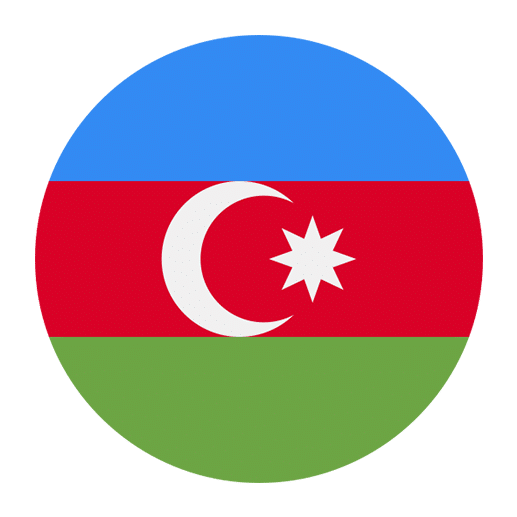Learning a new language can be an exciting and rewarding journey, and one of the most effective ways to start is by familiarizing yourself with common verbs. In Azerbaijani, as in any language, verbs play a crucial role in communication. They allow you to express actions, states, and occurrences. This article aims to introduce you to some of the most commonly used verbs in Azerbaijani, helping you build a solid foundation for further language learning.
The Importance of Verbs in Azerbaijani
Understanding and using verbs correctly is essential for constructing meaningful sentences in Azerbaijani. Verbs convey actions (e.g., run, eat), states (e.g., be, exist), and occurrences (e.g., happen, become). By learning common verbs, you’ll be able to describe activities, express your needs, and engage in basic conversations with native speakers.
Basic Structure of Azerbaijani Verbs
Before diving into the list of common verbs, it’s important to understand the basic structure of Azerbaijani verbs. Azerbaijani is a Turkic language, and its verbs often follow a consistent pattern. Here are some key points to keep in mind:
1. **Root Forms**: The base form of a verb is its root, to which various suffixes are added to indicate tense, mood, and aspect.
2. **Suffixes**: Azerbaijani verbs use suffixes to modify their meaning. These suffixes can denote past, present, and future tenses, as well as other grammatical aspects.
3. **Vowel Harmony**: Azerbaijani uses vowel harmony, meaning the vowels within a word harmonize to be either front or back vowels. This affects the suffixes attached to verbs.
Common Verbs in Azerbaijani
Now that you have a basic understanding of how Azerbaijani verbs work, let’s explore some of the most commonly used verbs in the language. These verbs will be presented in their root forms along with examples to illustrate their usage.
1. Olmaq (To Be)
The verb “olmaq” is one of the most fundamental verbs in Azerbaijani. It is used to indicate existence, identity, and states of being.
– Mən müəlliməm. (I am a teacher.)
– O, çox xoşbəxtdir. (He/She is very happy.)
– Biz evdəyik. (We are at home.)
2. Yemək (To Eat)
The verb “yemək” is used to describe the action of eating.
– Mən alma yeyirəm. (I am eating an apple.)
– Biz nahar edirik. (We are eating lunch.)
– O, çox yemək yeyir. (He/She eats a lot of food.)
3. İçmək (To Drink)
The verb “içmək” is used to describe the action of drinking.
– Mən su içirəm. (I am drinking water.)
– O, çay içir. (He/She drinks tea.)
– Biz şərab içirik. (We are drinking wine.)
4. Gəlmək (To Come)
The verb “gəlmək” is used to describe the action of coming.
– Mən gəlirəm. (I am coming.)
– O, evə gəlir. (He/She is coming home.)
– Biz sabah gələcəyik. (We will come tomorrow.)
5. Getmək (To Go)
The verb “getmək” is used to describe the action of going.
– Mən gedirəm. (I am going.)
– O, məktəbə gedir. (He/She is going to school.)
– Biz şəhərə gedəcəyik. (We will go to the city.)
6. Sevmək (To Love)
The verb “sevmək” is used to express love or affection.
– Mən səni sevirəm. (I love you.)
– O, musiqini sevir. (He/She loves music.)
– Biz ailəmizi sevirik. (We love our family.)
7. İstəmək (To Want)
The verb “istəmək” is used to express a desire or want.
– Mən çay istəyirəm. (I want tea.)
– O, hədiyyə istəyir. (He/She wants a gift.)
– Biz səyahət etmək istəyirik. (We want to travel.)
8. Bilmək (To Know)
The verb “bilmək” is used to express knowledge or awareness.
– Mən bunu bilirəm. (I know this.)
– O, problemi bilir. (He/She knows the problem.)
– Biz həqiqəti bilirik. (We know the truth.)
9. Düşünmək (To Think)
The verb “düşünmək” is used to express thoughts or considerations.
– Mən sənin haqqında düşünürəm. (I am thinking about you.)
– O, planı düşünür. (He/She is thinking about the plan.)
– Biz gələcəyimiz haqqında düşünürük. (We are thinking about our future.)
10. Danışmaq (To Speak)
The verb “danışmaq” is used to describe the action of speaking or talking.
– Mən Azərbaycan dilində danışıram. (I speak Azerbaijani.)
– O, dostları ilə danışır. (He/She is speaking with friends.)
– Biz müəllimlə danışırıq. (We are speaking with the teacher.)
Using Verbs in Different Tenses
Understanding the root forms of verbs is just the beginning. To communicate effectively, you need to know how to conjugate these verbs in different tenses. Here are some examples of how the verbs we’ve discussed can be used in various tenses:
Present Tense
– Mən gəlirəm. (I am coming.)
– O, oxuyur. (He/She is reading.)
– Biz dinləyirik. (We are listening.)
Past Tense
– Mən gəldim. (I came.)
– O, oxudu. (He/She read.)
– Biz dinlədik. (We listened.)
Future Tense
– Mən gələcəyəm. (I will come.)
– O, oxuyacaq. (He/She will read.)
– Biz dinləyəcəyik. (We will listen.)
Practice Makes Perfect
Learning verbs and their conjugations is crucial, but practice is what will truly make you proficient. Here are some tips to help you practice and reinforce your understanding of Azerbaijani verbs:
1. **Flashcards**: Create flashcards with the root form of the verb on one side and its conjugated forms on the other. Review these regularly.
2. **Language Apps**: Use language learning apps that offer Azerbaijani courses. These often include exercises for verb conjugation.
3. **Conversation**: Practice speaking with native Azerbaijani speakers or language exchange partners. Focus on using the verbs you’ve learned in real-life conversations.
4. **Writing**: Write short paragraphs or diary entries in Azerbaijani, making an effort to use a variety of verbs and tenses.
5. **Listening**: Listen to Azerbaijani music, watch movies, or follow Azerbaijani YouTube channels. Pay attention to how verbs are used in different contexts.
Conclusion
Mastering common verbs in Azerbaijani is a significant step towards achieving fluency in the language. By understanding the root forms, learning how to conjugate them in different tenses, and practicing regularly, you’ll be well on your way to becoming proficient in Azerbaijani. Remember, language learning is a gradual process, so be patient with yourself and enjoy the journey. Happy learning!

